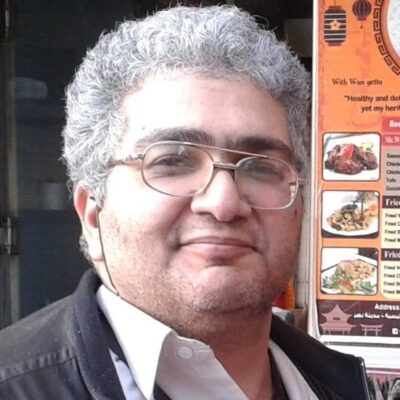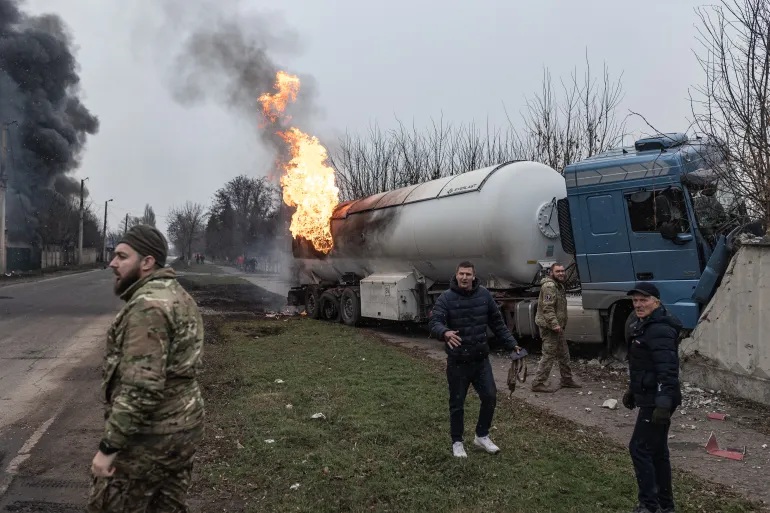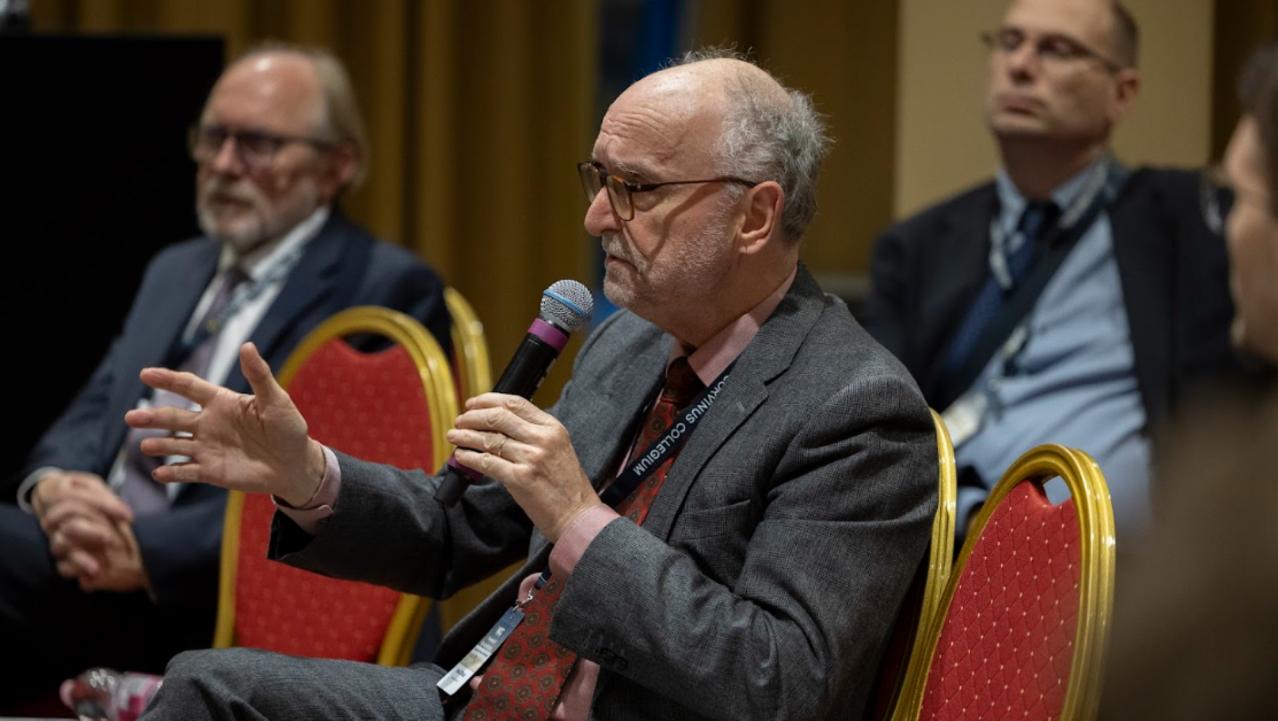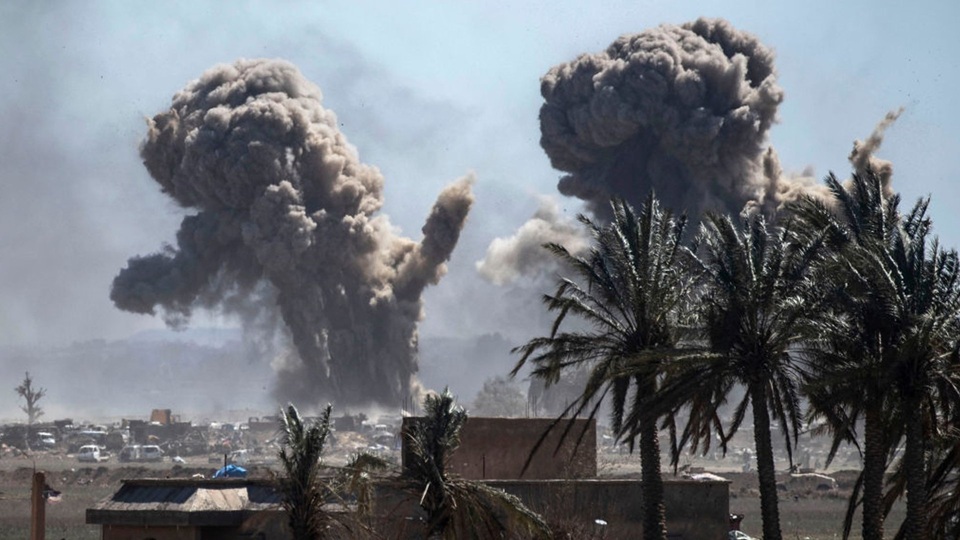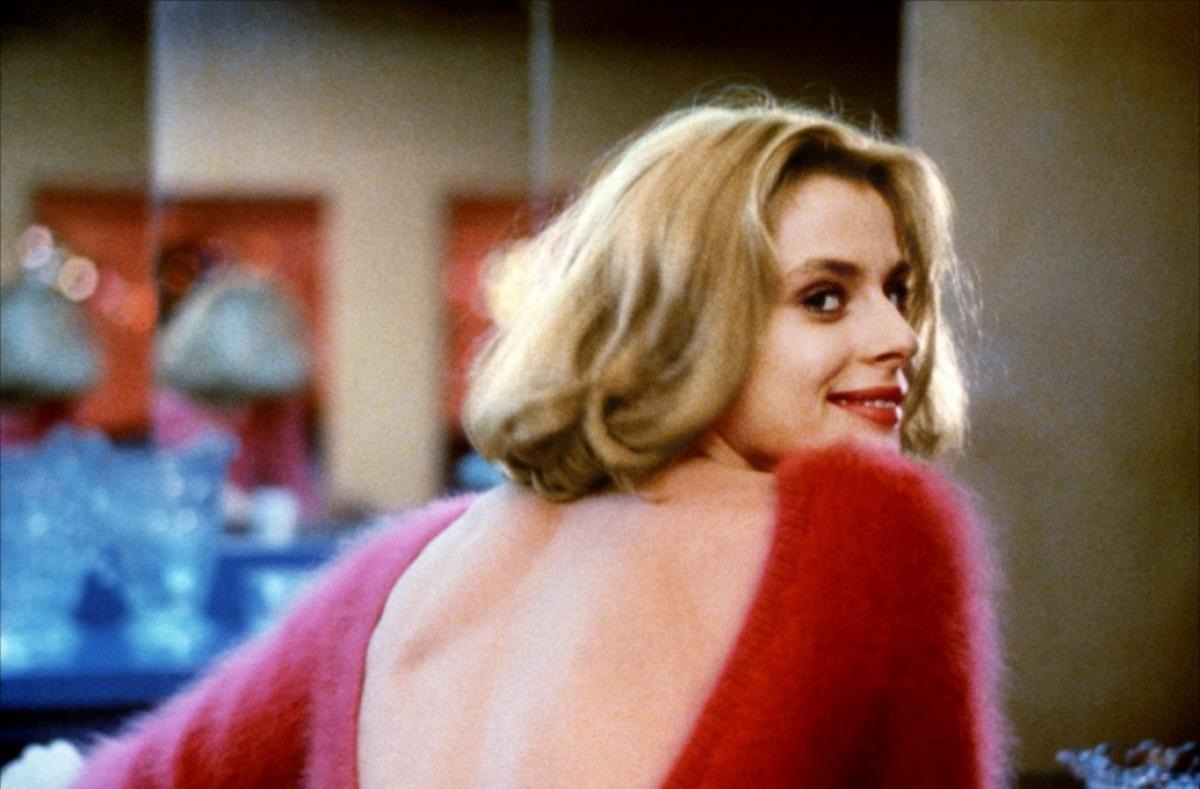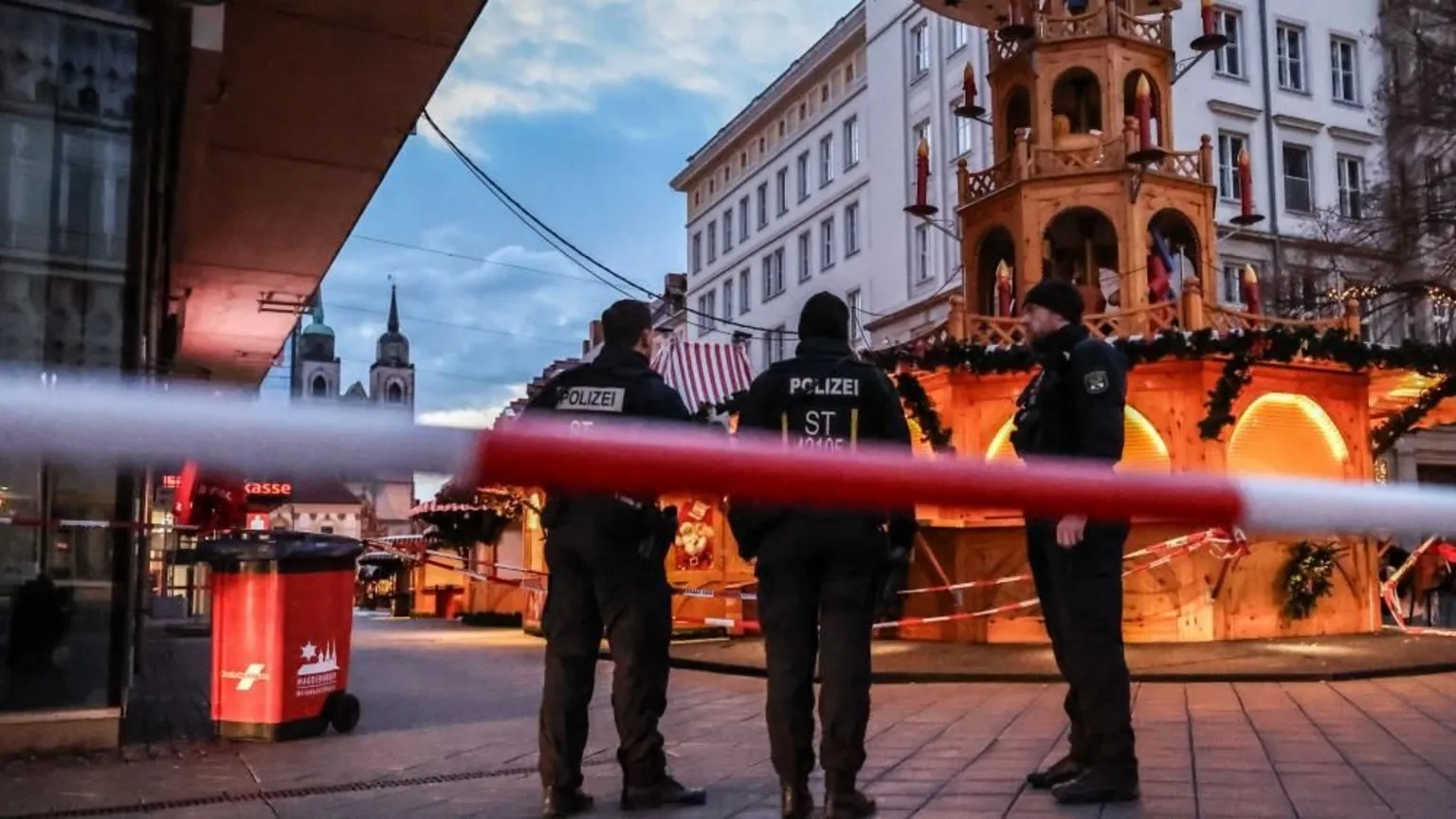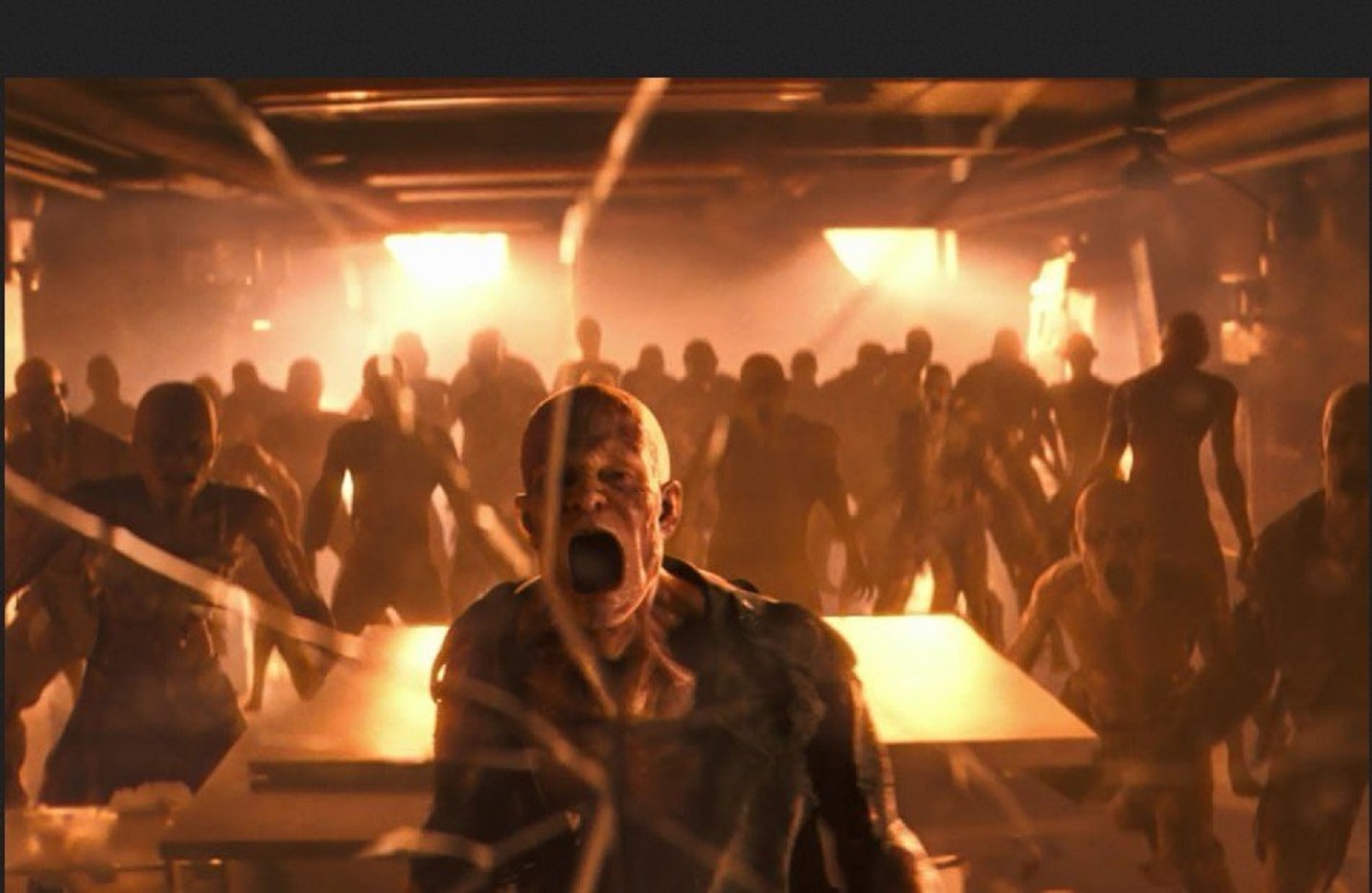
We’ve interviewed and reviewed Ahmed before, so he needs no introduction. We begin instead with the latest instalment of his Malaz series, ‘Children of the Apocalypse’ (2025). Here, the nuclear winter has given way to the atomic summer, with radiation from the sun pouting the ozone hole left from the nuclear exchange in ‘The Black Winter’ (2018).
By Emad Aysha
People live underground, with blind Zombie and mutant dogs topside that can stand the sunlight. Other humans include a band of scientists (the children of the apocalypse) who take babies from the communities in exchange for (genetically reengineered) food supplies. There are also merciless humans in the Metro lines that prey on the innocent.
Dear Ahmed, what works influenced you in your world-building? And why does the hero, Omar, spare the Zombies at the end?
I’ve always been fascinated by post-apocalyptic settings in literature and cinema. I drew inspiration from novels like The Road, I Am Legend, and Metro 2033—along with its video game adaptation—and other games such as Fallout, as well as films like Mad Max.
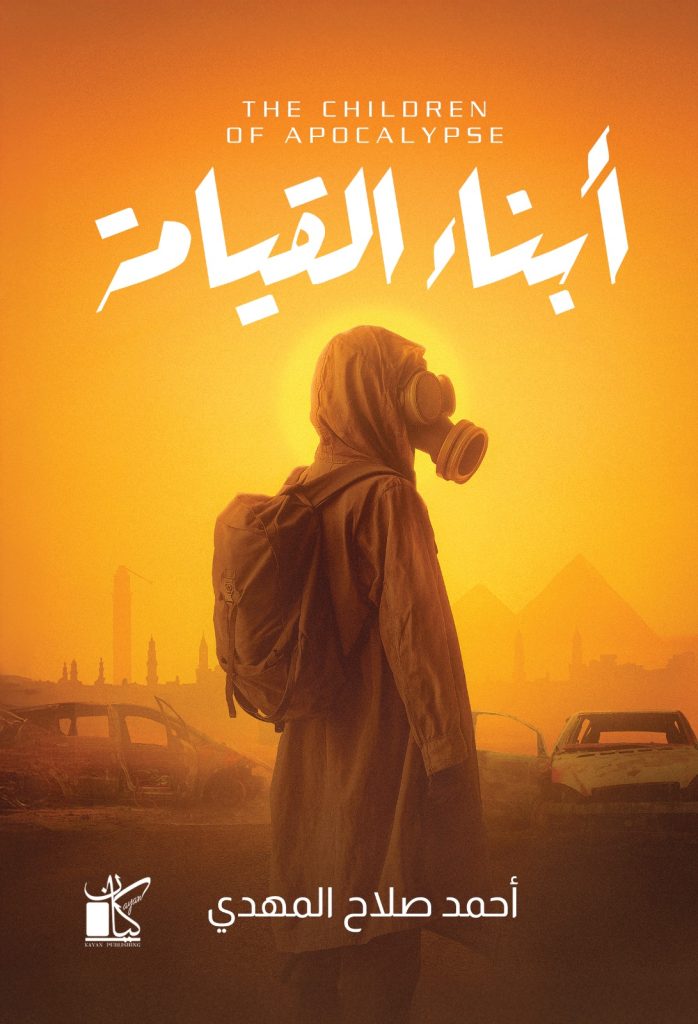
WHEEL OF HISTORY: The front cover of 'Children of the Apocalypse'. Here nuclear winter gives way to nuclear summer. Things always get a lot worse before they get any better—in fact and fiction.
As for Omar, he holds on to his humanity despite the devastation around him. He believes that every creature deserves a chance at life, and that the mutants—or “zombies,” as you called them—never chose to become what they are. They shouldn’t be condemned to death simply because fate made them this way. That compassion, I think, is what makes him worthy of ultimately deciding humanity’s destiny.
Omar has a good and ‘safe’ life inside his shelter. Why does he insist on venturing outside? And why the power struggles in his shelter?
Omar’s life in the shelter may be safe, but it’s also suffocating. Safety without freedom is a kind of prison, and that restlessness is what pushes him outside. He wants more than survival—he wants meaning. And that’s a theme I explore throughout the book: Is a life worth living if it’s only about staying alive?
As for the power struggles—wherever human beings exist, conflict over authority is inevitable; put three people on a deserted island and they’ll still fight over who gets to rule it. That’s just human nature. And this struggle for control extends beyond the shelter—into the Metro under Mansour’s grip, and even to the Children of the Apocalypse themselves.
The Metro was a refuge for the hero and his sister in Black Winter. Why the sudden change?
The transformation of the Metro is my way of showing how fragile human sanctuaries are. Communities often begin with solidarity, but over time, fear, suspicion, and greed corrode them. Nothing remains pure forever. I wanted readers to feel that even hope can turn into horror if it isn’t carefully protected. The same thing happened in Malaz: City of Resurrection, where a haven eventually decayed into a city ruled by tyrannical hunters. Humanity has a way of corrupting everything it touches.
Malaz, of course, is steampunk. What attracts you specifically to this genre? Are there other steampunk novels or series set in Egypt, or in Arabic?
What I love most about steampunk is that it lets me reimagine our past through fantasy—asking “what if history had taken a different turn?” It gives me the chance to play with an alternate version of the world while also reflecting on how technology, industry, and empire shaped us. For me, writing Malaz was also a way of exploring Egypt’s relationship with technology and colonialism, but through a fantastical lens.
There are Arabic steampunk books, but they’re mostly translations, such as the Leviathan series translated by Ammar El-Masry and published by Yatakayyaloon in Saudi Arabia. I’d love to see more original Egyptian steampunk novels in the future.
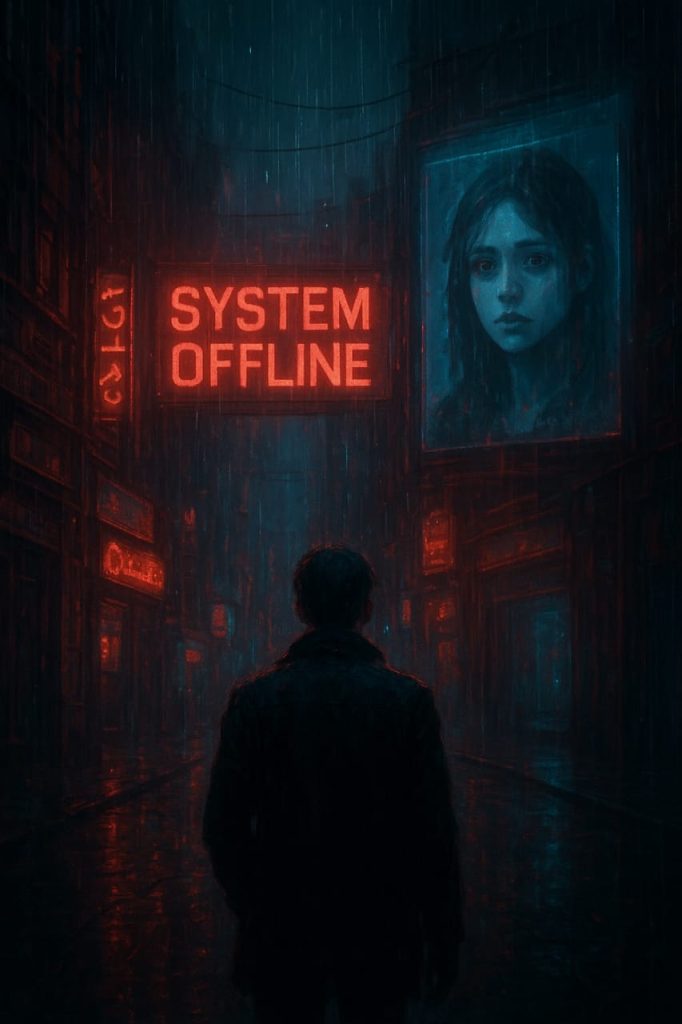
LOST IN THE STATIC: Ahmed's own AI generated image of his Cairo cyberpunk series, with a little help from ChatGPT. [With the permission of the interviewee]
Now let’s talk about your forthcoming novella (هروب من الذاكرة) or escape from memory. This is solidly cyberpunk, full of neon lights, urban sprawl, decay and even flying cars. Am I correct that Blade Runner (1982) inspired the story?
Yes, the idea came after I watched Blade Runner and then read the novel it was based on, Do Androids Dream of Electric Sheep?. That’s when I decided to write a neo-noir story set in a futuristic Cairo.
Cairo, in many ways, already feels cyberpunk—the contrast between cutting-edge technology and decaying infrastructure, the neon advertisements alongside crumbling buildings, the energy and chaos of its streets. It felt natural to place a story like this here.
The film and novel also influenced my short story collection Metal Pulses (coming soon), which centres on robots. Of course, Isaac Asimov’s Robot series was another major inspiration. These stories are set in future Egypt as well, but the protagonists are exclusively robots. Through them, I explore questions like: Can a robot feel human emotions? What is consciousness? What truly separates humans from machines? These are the same themes Philip K. Dick wrestled with in his work.
How is Egyptian cyberpunk different from Western cyberpunk?
Cyberpunk everywhere explores decay, inequality, and the collision of technology and humanity—but Egyptian cyberpunk has its own flavour. It reflects a society where rapid technological change collides with deep-rooted history, bureaucracy, and social struggles. Our stories naturally absorb the atmosphere of Cairo: the overcrowded streets, the neon glow against crumbling architecture, the sense of surveillance and authority everywhere.
In that sense, Egyptian cyberpunk isn’t just darker than its Western counterpart—it’s also more allegorical. It often engages with political and social realities that can’t always be discussed openly, so writers use metaphor and futurism to critique power, corruption, and inequality. It’s cyberpunk filtered through the lived experience of Egyptians, where dystopia doesn’t feel like a distant future but something just around the corner.
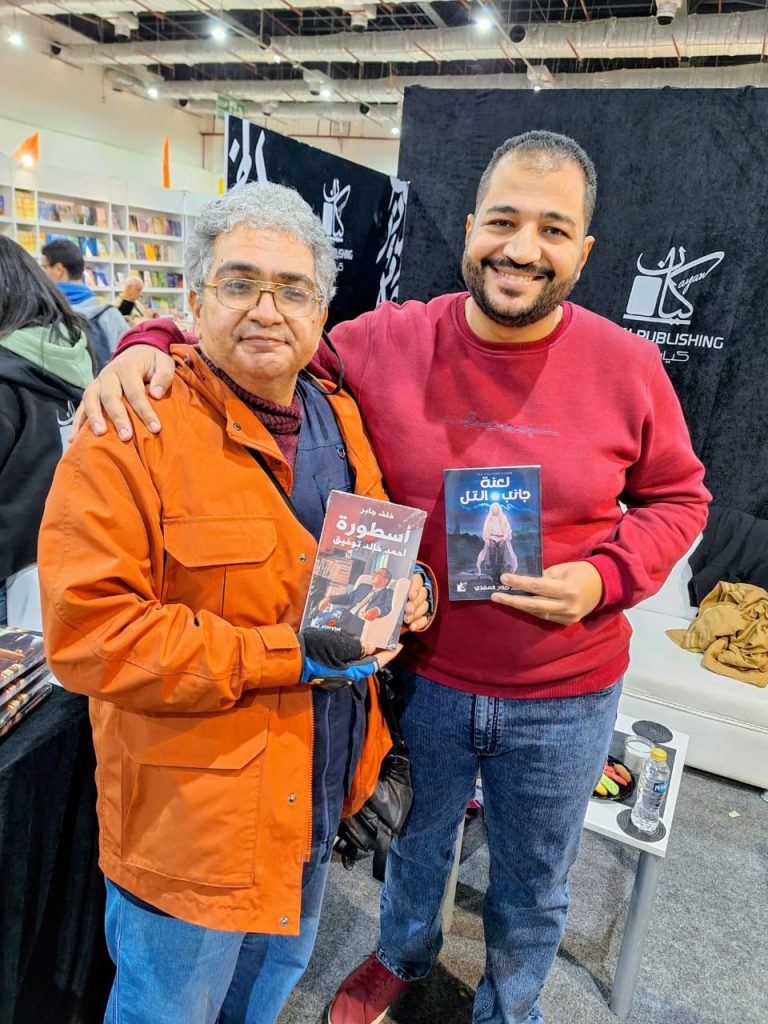
TEAM-WORK WORKS: Me and Ahmed [right] at the 2025 Cairo International Book Fair. Without bragging, I'm the one who cajoled him into watching 'Blade Runner', and in a run down part of town where the bleak future has already arrived! [With the permission of the interviewee]
A small interjection on my part, here at the end. I've just read Ahmed's follow-up story, (أرشيف القاهرة) or Cairo Archives, and its the most amazing thing he's ever written. You'll never look at Cairo, or cyberpunk, the same way again. Not only can we beat Westerners in the post-apoc game, through our rich historical resources, but in the digitized world too!
